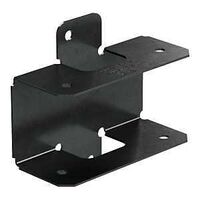
|

|
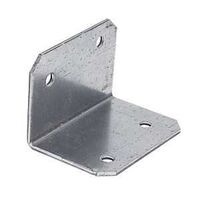
|

|
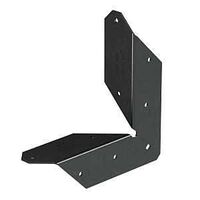
|
|
|
|
|
|
|
|
|
|
The Outdoor Accents? APRTR connects a 2X member to another member in wood construction applications. Manufactured to high-quality standards to ensure solid performance, this Rigid Tie connector features ZMAX? galvanization with a black powder-coat finish for added corrosion resistance. As part of the Outdoor Accents accessories line, this decorative hardware connector can be used with either the Mission Collection? or Avant Collection?, as well as separately to add flair to any outdoor project.
|
The ML angle combines strength and versatility through the use of Strong-Drive? SDS heavy-duty connector screws. Fastener holes are staggered to minimize wood splitting and opposing hole patterns allow for back-to-back installation without fastener interference.
|
The Outdoor Accents? APRTA is designed to connect two wood members at a 90 deg angle. This Rigid Tie angle fastens the members on two sides, eliminating the need for angle bracing. Manufactured to high-quality standards to ensure solid performance, this Rigid Tie connector features ZMAX? galvanization with a black powder-coat finish for added corrosion resistance. As part of the Outdoor Accents accessories line, this decorative hardware connector can be used with either the Mission Collection? or Avant Collection?, as well as separately to add flair to any outdoor project.
|

|
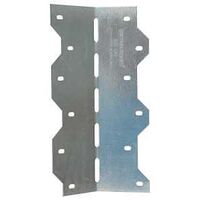
|

|
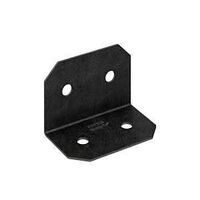
|

|
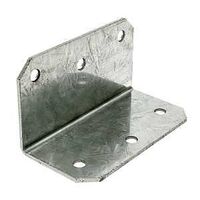
|
|
|
|
|
|
|
|
|
|
Simpson Strong-Tie Skewable Angle, Steel, ZMAX, 3-1/2 in Width, 1-1/4 in Depth, 7-7/8 in Height, 18 ga Material Thickness
|
Outdoor Accents? angles tie together beams, rafters and more. The APVA angle makes structural connections between beams and posts more visually appealing. These 90 deg angles make connections stronger and provide consistent, straight corners for a variety of outdoor projects. Part of the Avant collection.
|
The ML-angle combines strength and versatility through the use of Strong-Drive? SDS heavy-duty connector screws. Fastener holes are staggered to minimize wood splitting and opposing hole patterns allow for back-to-back installation without fastener interference.
|

|
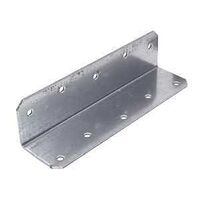
|

|
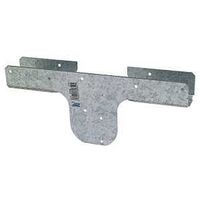
|

|

|
|
|
|
|
|
|
|
|
|
The ML-angle combines strength and versatility through the use of Strong-Drive? SDS heavy-duty connector screws. Fastener holes are staggered to minimize wood splitting and opposing hole patterns allow for back-to-back installation without fastener interference.
|
The RTF is designed to connect two horizontal 2X members to a vertical 2 x 4 in wood applications. Manufactured to high-quality standards to ensure solid performance, this flat rigid tie connector features a galvanized finish for added corrosion resistance.
|
The ML-angle combines strength and versatility through the use of Strong-Drive? SDS heavy-duty connector screws. Fastener holes are staggered to minimize wood splitting and opposing hole patterns allow for back-to-back installation without fastener interference.
|

|
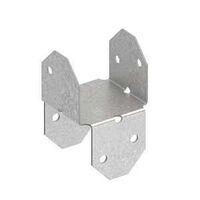
|

|

|

|
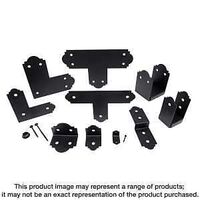
|
|
|
|
|
|
|
|
|
|
The RTB is designed for connecting intersecting 2X members in wood construction applications. Manufactured to high-quality standards to ensure solid performance, this rigid tie features a G90 galvanized finish for added corrosion resistance and requires the use of hot-dip galvanized fasteners. The versatile RTB is ideal for building lattice, railings and shelving.
|
Outdoor Accents? angles tie together beams, rafters and more. The APVA angle makes structural connections between beams and posts more visually appealing. These 90 deg angles make connections stronger and provide consistent, straight corners for a variety of outdoor projects. Part of the Avant collection.
|
Outdoor Accents? angles tie together beams, rafters and more. The APA angle makes structural connections between beams and posts much more visually appealing. These angles make connections stronger and provide consistent, straight corners for a variety of outdoor projects.
|

|

|

|
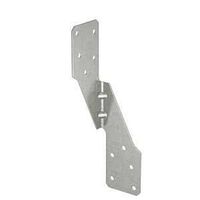
|

|
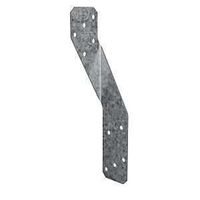
|
|
|
|
|
|
|
|
|
|
The A34 is a framing angle designed for making a variety of connections. The angle is secured with nails or SD screws and features a speed prong to temporarily hold the connector in place during fastening. The economical A34 provides easy and fast installation.
|
The H2.5A single-sided hurricane tie is designed to resist moderate loads at the rafter/truss to-top-plate connection. As part of a continuous load path, the H2.5A resists both lateral and uplift loads. The symmetrical design eliminates the need for separate right and left parts.
|
The H2.5T single-sided hurricane tie is designed to resist moderate loads at the rafter/truss to-top-plate connection. As part of a continuous load path, the H2.5T resists both lateral and uplift loads. H2.5T ties are available in left and right-hand models and can be installed in pairs.
|

|
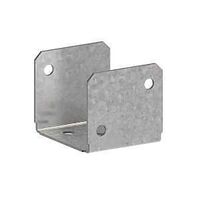
|

|
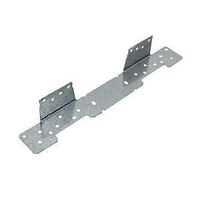
|

|

|
|
|
|
|
|
|
|
|
|
The RTU is designed for connecting intersecting members in wood construction applications. Manufactured to high-quality standards to ensure solid performance, this U-shaped rigid tie features a G90 galvanized finish for added corrosion resistance. The versatile RTU is ideal for a variety of projects including fences, railings and utility furniture or any application where a 2X member crosses another.
|
The LSC adjustable stair-stringer connector offers a versatile, concealed connection between the stair-stringer and the carrying header or rim board while replacing costly framing. Field slopeable to all common stair-stringer pitches, the LSC connector is suitable for either solid or notched stringers.
|
The A35 is a balanced and completely reversible framing angle designed for making a variety of connections. The angle's exclusive bend slot allows instant and accurate field bends for all two and three-way ties. The A35 is secured with nails and features a speed prong to temporarily hold the connector in place for easy and fast installation.
|

|
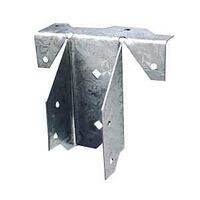
|

|
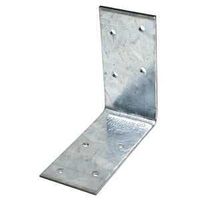
|

|
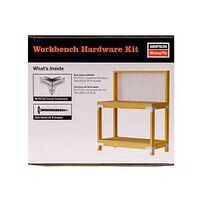
|
|
|
|
|
|
|
|
|
|
An interlock provides alignment control and correct nailing locations. For a rafter-to-face connector, flatten the top-flange into the face plane. The RR may be used with rafters sloped up to 30 deg.
|
Our line of angles provides a way to make a wide range of 90 deg connections.
|
The RTC is a uniquely designed rigid tie connector that connects two horizontal members at a corner to a vertical wood member. Manufactured to high-quality standards to ensure solid performance, this corner rigid tie connector features a galvanized finish for added corrosion resistance.
|

|
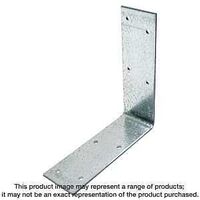
|

|
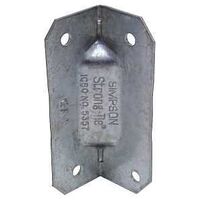
|

|
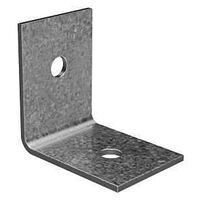
|
|
|
|
|
|
|
|
|
|
Our line of angles provides a way to make a wide range of 90 deg connections.
|
The GA angle is a small, versatile angle designed to improve corner stability. The engineered and tested gusset in the angle increases strength for lateral and uplift loads. The GA installs easily with nails, or for increased loads, with Strong-Drive? SD Connector screws.
|
The HL is a versatile angle designed to improve corner stability. This multipurpose connector helps promote standardization and construction economy. The L-shaped design of this heavy utility strap makes it ideal for a variety of applications where two members meet at a 90 deg angle.
|

|

|

|
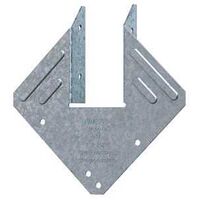
|

|
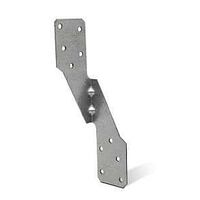
|
|
|
|
|
|
|
|
|
|
The A34 is a framing angle designed for making a variety of connections. The angle is secured with nails or SD screws and features a speed prong to temporarily hold the connector in place during fastening. The economical A34 provides easy and fast installation.
|
The H1A provides a connection between the truss or rafter and the wall of the structure that helps resist wind and seismic forces. The H1A is designed for nominal 2X lumber. These U-shaped hurricane ties provide faster installation than using two single-sided ties. The embossments add stiffness in crucial areas for improved performance.
|
The H2.5A single-sided hurricane tie is designed to resist moderate loads at the rafter/truss to-top-plate connection. As part of a continuous load path, the H2.5A resists both lateral and uplift loads. The symmetrical design eliminates the need for separate right and left parts.
|

|
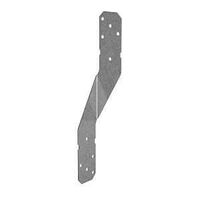
|

|
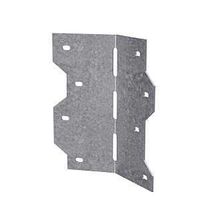
|

|

|
|
|
|
|
|
|
|
|
|
The H8 single-sided hurricane tie is designed to resist moderate loads at the top of a wall connection. Provides a connection as part of a continuous load path to resist wind and seismic forces. The H8 is versatile and has been tested for connecting I-joist rafters to double-top-plates as well as studs to sill plates.
|
The LS connector is a cost-effective method for connecting roof rafters to hip rafters. The durable design and fastening options of these load-rated skewable angles make them an ideal option compared to field-fabricated clip angles. The LS has well-defined fastener locations and testing ensures that the tabulated load values account for connection eccentricities.
|
Our line of angles provides a way to make a wide range of 90 deg connections.
|

|
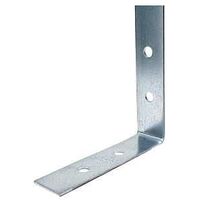
|

|
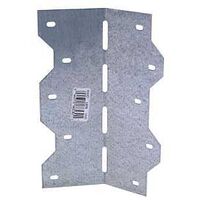
|

|
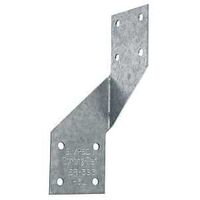
|
|
|
|
|
|
|
|
|
|
Our line of angles provides a way to make a wide range of 90 deg connections.
|
The LS connector is a cost-effective method for connecting roof rafters to hip rafters. The durable design and fastening options of these load-rated skewable angles make them an ideal option compared to field-fabricated clip angles. The LS has well-defined fastener locations and testing ensures that the tabulated load values account for connection eccentricities.
|
The H3 single-sided hurricane tie is designed to resist moderate loads at the rafter/truss to-top-plate connection. As part of a continuous load path, the H3 resists both lateral and uplift loads. H3 ties are available in left and right-hand models and can be installed in pairs.
|

|
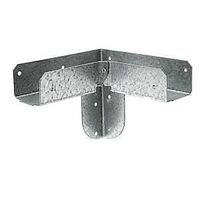
|

|
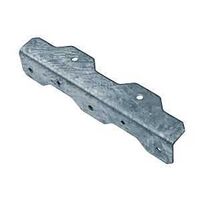
|

|
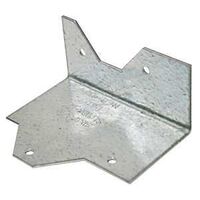
|
|
|
|
|
|
|
|
|
|
The RTC is a uniquely designed rigid tie connector that connects two horizontal members at a corner to a vertical wood member. Manufactured to high-quality standards to ensure solid performance, this corner rigid tie connector features a galvanized finish for added corrosion resistance.
|
For use in structurally sound staircase framing. The TA eliminates costly conventional notching.
|
The L-angle is a general utility-reinforcing connector with multiple uses. The durable design and fastening options of these load-rated skewable angles make them an ideal option compared to field-fabricated clip angles. The L-angle has well-defined fastener locations and testing ensures that the tabulated load values account for connection eccentricities.
|

|
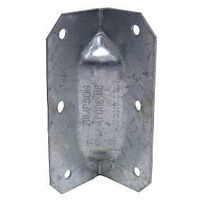
|

|

|

|
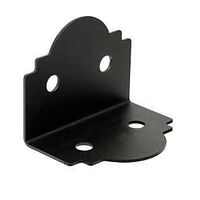
|
|
|
|
|
|
|
|
|
|
The GA angle is a small, versatile angle designed to improve corner stability. The engineered and tested gusset in the angle increases strength for lateral and uplift loads. The GA installs easily with nails, or for increased loads, with Strong-Drive? SD Connector screws.
|
The LS connector is a cost-effective method for connecting roof rafters to hip rafters. The durable design and fastening options of these load-rated skewable angles make them an ideal option compared to field-fabricated clip angles. The LS has well-defined fastener locations and testing ensures that the tabulated load values account for connection eccentricities.
|
Outdoor Accents? angles tie together beams, rafters and more. The APA angle makes structural connections between beams and posts much more visually appealing. These angles make connections stronger and provide consistent, straight corners for a variety of outdoor projects.
|

|
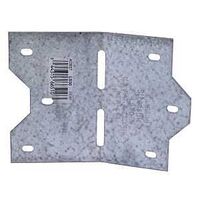
|

|
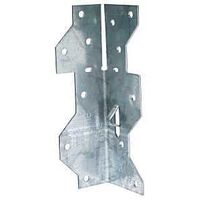
|

|
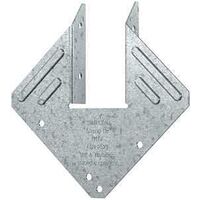
|
|
|
|
|
|
|
|
|
|
The LS connector is a cost-effective method for connecting roof rafters to hip rafters. The durable design and fastening options of these load-rated skewable angles make them an ideal option compared to field-fabricated clip angles. The LS has well-defined fastener locations and testing ensures that the tabulated load values account for connection eccentricities.
|
The A35 is a balanced and completely reversible framing angle designed for making a variety of connections. The angle's exclusive bend slot allows instant and accurate field bends for all two and three-way ties. The A35 is secured with nails and features a speed prong to temporarily hold the connector in place for easy and fast installation.
|
The H1A provides a connection between the truss or rafter and the wall of the structure that helps resist wind and seismic forces. The H1A is designed for nominal 2X lumber. These U-shaped hurricane ties provide faster installation than using two single-sided ties. The embossments add stiffness in crucial areas for improved performance.
|

|
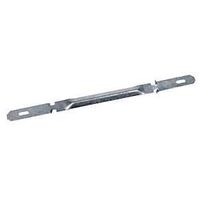
|

|
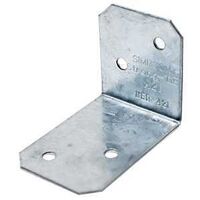
|

|

|
|
|
|
|
|
|
|
|
|
The wedge tie (WT) is a form tie that secures concrete forms in place while the concrete is poured. It easily installs between form boards and accurately spaces the forms. Several models are available for varying wall thickness and types of form boards. Designed for low foundation wall applications. 5/8 in wide formed V design for rigidity allows accurate form spacing and support. Sizes now available for composite form board.
|
Our line of angles provides a way to make a wide range of 90 deg connections.
|
The wedge tie (WT) is a form tie that secures concrete forms in place while the concrete is poured. It easily installs between form boards and accurately spaces the forms. Several models are available for varying wall thickness and types of form boards. Designed for low foundation wall applications. 5/8 in wide formed V design for rigidity allows accurate form spacing and support. Sizes now available for composite form board.
|

|

|

|

|

|
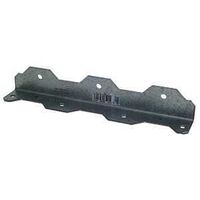
|
|
|
|
|
|
|
|
|
|
The L-angle is a general utility-reinforcing connector with multiple uses. The durable design and fastening options of these load-rated skewable angles make them an ideal option compared to field-fabricated clip angles. The L-angle has well-defined fastener locations and testing ensures that the tabulated load values account for connection eccentricities.
|
Our line of angles provides a way to make a wide range of 90 deg connections.
|
For use in structurally sound staircase framing. The TA eliminates costly conventional notching.
|

|
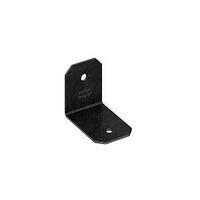
|

|
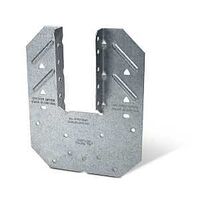
|

|
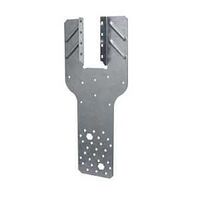
|
|
|
|
|
|
|
|
|
|
Outdoor Accents? angles tie together beams, rafters and more. The APVA angle makes structural connections between beams and posts more visually appealing. These 90 deg angles make connections stronger and provide consistent, straight corners for a variety of outdoor projects. Part of the Avant collection.
|
The H10A series holds the rafter or truss on both sides for high uplift applications with embossments that add stiffness in crucial areas for improved performance. These U-shaped hurricane ties provide faster installation than using two single-sided ties. H10A models come with optional fastener holes to connect roof blocking to the top-plate. Slots allow field bending up to a maximum pitch of 6:12 to accommodate angled blocking.
|
The H10S attach to the truss joist and provide good uplift resistance.
|

|
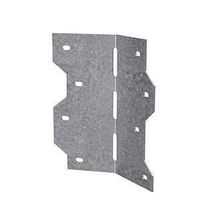
|

|
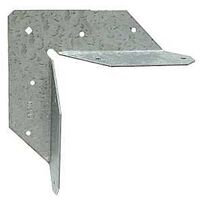
|

|
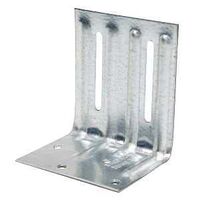
|
|
|
|
|
|
|
|
|
|
The LS connector is a cost-effective method for connecting roof rafters to hip rafters. The durable design and fastening options of these load-rated skewable angles make them an ideal option compared to field-fabricated clip angles. The LS has well-defined fastener locations and testing ensures that the tabulated load values account for connection eccentricities.
|
The RTA is designed to connect two wood members at a 90 deg angle. This rigid tie angle fastens the members on two sides, eliminating the need for angle bracing. Manufactured to high-quality standards to ensure solid performance, this rigid tie connector features a galvanized finish for added corrosion resistance.
|
For alignment control between a roof truss and nonbearing walls, the 1-1/2 in slot permits vertical truss chord movement when loads are applied.
|

|
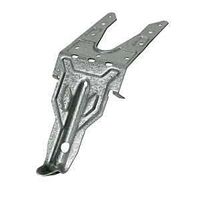
|

|
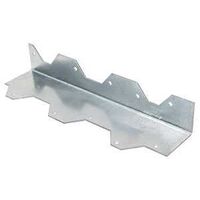
|

|
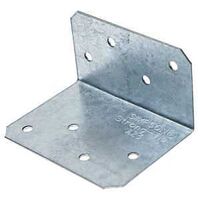
|
|
|
|
|
|
|
|
|
|
The MASA is a mudsill anchor that provides a time-saving alternative to anchor bolts. This mudsill anchor eliminates the need for 3 in square plate washers for seismic design and, in some cases, has allowable loads that meet or exceed the parallel and perpendicular-to-plate shear loads of other cast-in-place anchors. The MASA is ideal for installation on standard forms and is code listed by ICC-ES under the 2012, 2015, 2018 and 2021 IBC? and IRC?.
|
The L-angle is a general utility-reinforcing connector with multiple uses. The durable design and fastening options of these load-rated skewable angles make them an ideal option compared to field-fabricated clip angles. The L-angle has well-defined fastener locations and testing ensures that the tabulated load values account for connection eccentricities.
|
Our line of angles provides a way to make a wide range of 90 deg connections.
|

|
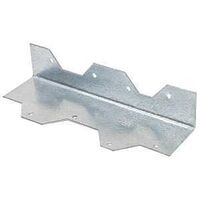
|

|
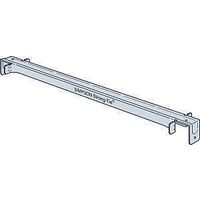
|

|
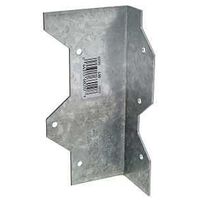
|
|
|
|
|
|
|
|
|
|
The L-angle is a general utility-reinforcing connector with multiple uses. The durable design and fastening options of these load-rated skewable angles make them an ideal option compared to field-fabricated clip angles. The L-angle has well-defined fastener locations and testing ensures that the tabulated load values account for connection eccentricities.
|
The Simpson Strong-Tie? TSBR truss spacer-restraint is a time-saving lateral-restraint product for wood and CFS framing that improves quality and safety while helping to meet the prescriptive recommendations of the WTCA/TPI. Easier to install than wood bracing, the TSBR firmly grips the trusses, capturing on-center spacing and keeping them vertical and plumb after placement, resulting in a better truss installation. The unique design eliminates additional time spent measuring truss spacing and laying out temporary lateral bracing. And once installed, the TSBR can remain in place to be sheathed over, thereby eliminating the need to remove temporary bracing and creating a safer, more stable work platform.
|
The L-angle is a general utility-reinforcing connector with multiple uses. The durable design and fastening options of these load-rated skewable angles make them an ideal option compared to field-fabricated clip angles. The L-angle has well-defined fastener locations and testing ensures that the tabulated load values account for connection eccentricities.
|

|

|

|

|

|
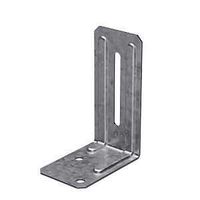
|
|
|
|
|
|
|
|
|
|
Outdoor Accents? angles tie together beams, rafters and more. The APA angle makes structural connections between beams and posts much more visually appealing. These angles make connections stronger and provide consistent, straight corners for a variety of outdoor projects.
|
Our line of angles provides a way to make a wide range of 90 deg connections.
|
For alignment control between a roof truss and nonbearing walls, the 1-1/2 in slot permits vertical truss chord movement when loads are applied.
|

|
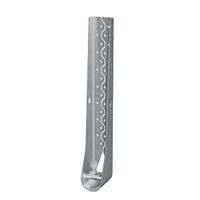
|

|

|

|

|
|
|
|
|
|
|
|
|
|
The HDU is designed for use in shearwalls and braced-wall panels, as well as other lateral applications in wood construction. The HDU uses Strong-Drive? SDS heavy-duty connector screws which install easily, reduce fastener slip and provide a greater net section than bolts.
|
The L-angle is a general utility-reinforcing connector with multiple uses. The durable design and fastening options of these load-rated skewable angles make them an ideal option compared to field-fabricated clip angles. The L-angle has well-defined fastener locations and testing ensures that the tabulated load values account for connection eccentricities.
|
The TSF is a fast and accurate method for spacing trusses that eliminates layout marking of top-plates and can be left in place under the sheathing. Accuracy is improved, spacing errors are minimized and it is easy to use.
|

|
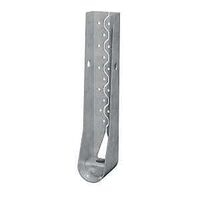
|

|
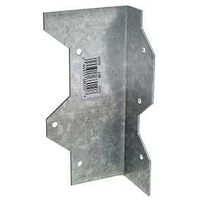
|

|
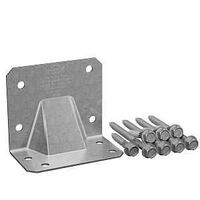
|
|
|
|
|
|
|
|
|
|
The HDU is designed for use in shearwalls and braced-wall panels, as well as other lateral applications in wood construction. The HDU uses Strong-Drive? SDS heavy-duty connector screws which install easily, reduce fastener slip and provide a greater net section than bolts.
|
The L-angle is a general utility-reinforcing connector with multiple uses. The durable design and fastening options of these load-rated skewable angles make them an ideal option compared to field-fabricated clip angles. The L-angle has well-defined fastener locations and testing ensures that the tabulated load values account for connection eccentricities.
|
The HGA is designed to secure the truss to the top-plate in gable end truss connections and other framing applications. The engineered gusset in the angle increases strength for lateral and uplift loads. This hurricane gusset angle installs easily with Strong-Drive? SDS heavy-duty connector screws.
|

|
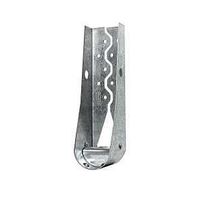
|

|
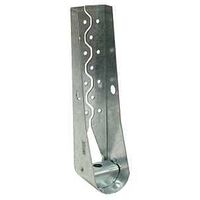
|

|
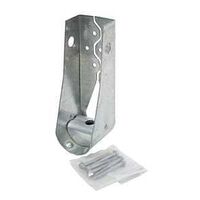
|
|
|
|
|
|
|
|
|
|
The HDU is designed for use in shearwalls and braced-wall panels, as well as other lateral applications in wood construction. The HDU uses Strong-Drive? SDS heavy-duty connector screws which install easily, reduce fastener slip and provide a greater net section than bolts.
|
The HDU is designed for use in shearwalls and braced-wall panels, as well as other lateral applications in wood construction. The HDU uses Strong-Drive? SDS heavy-duty connector screws which install easily, reduce fastener slip and provide a greater net section than bolts.
|
The HDU is designed for use in shearwalls and braced-wall panels, as well as other lateral applications in wood construction. The HDU uses Strong-Drive? SDS heavy-duty connector screws which install easily, reduce fastener slip and provide a greater net section than bolts.
|

|
VIEW MAP & PHOTO GALLERY | CALL US: 406-466-3100